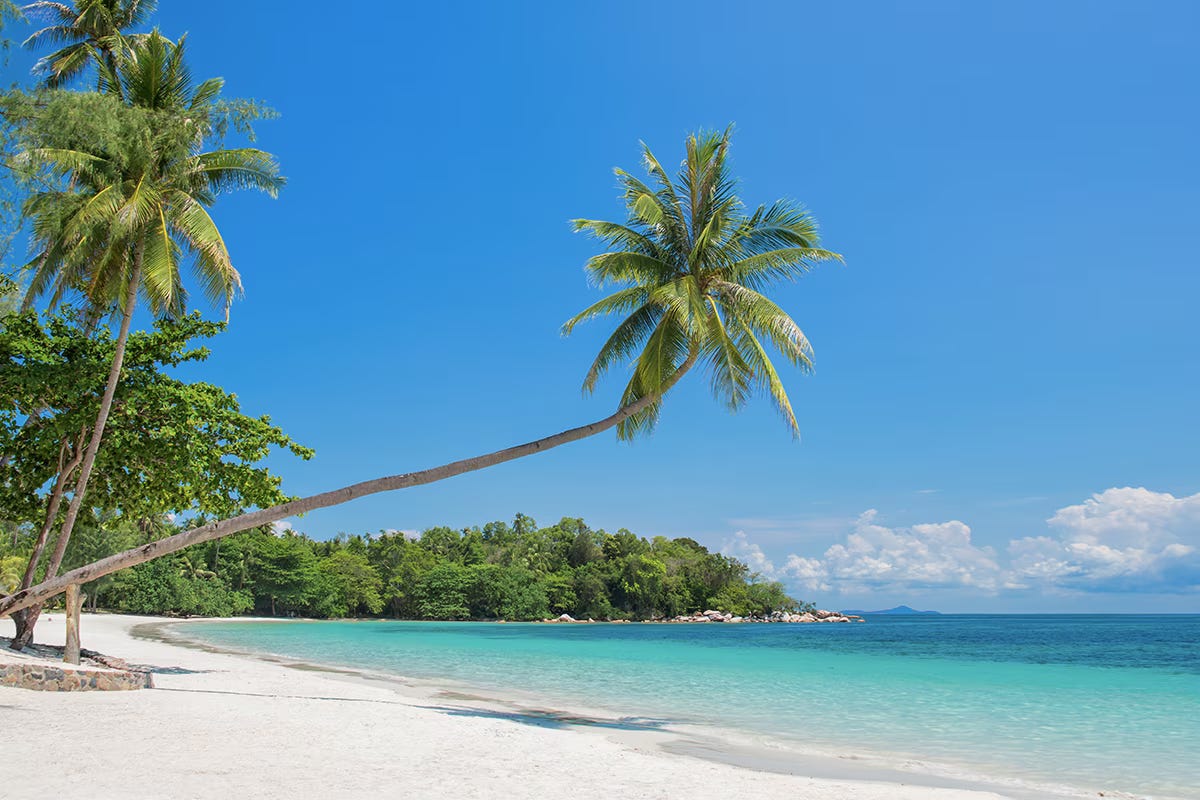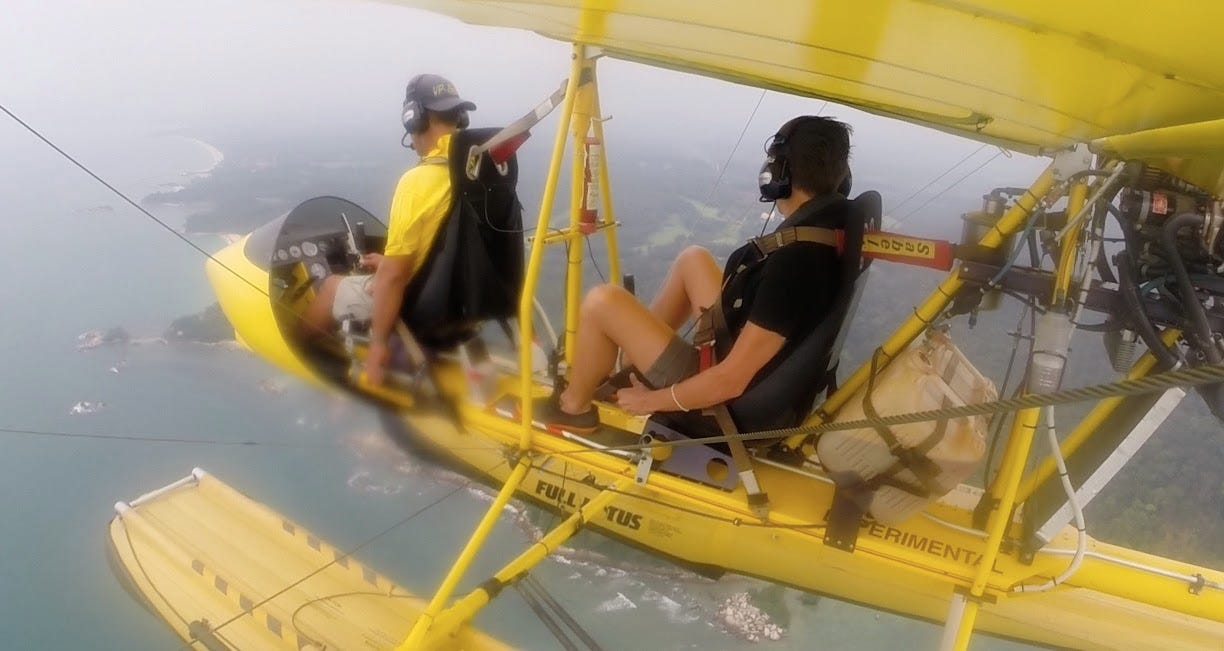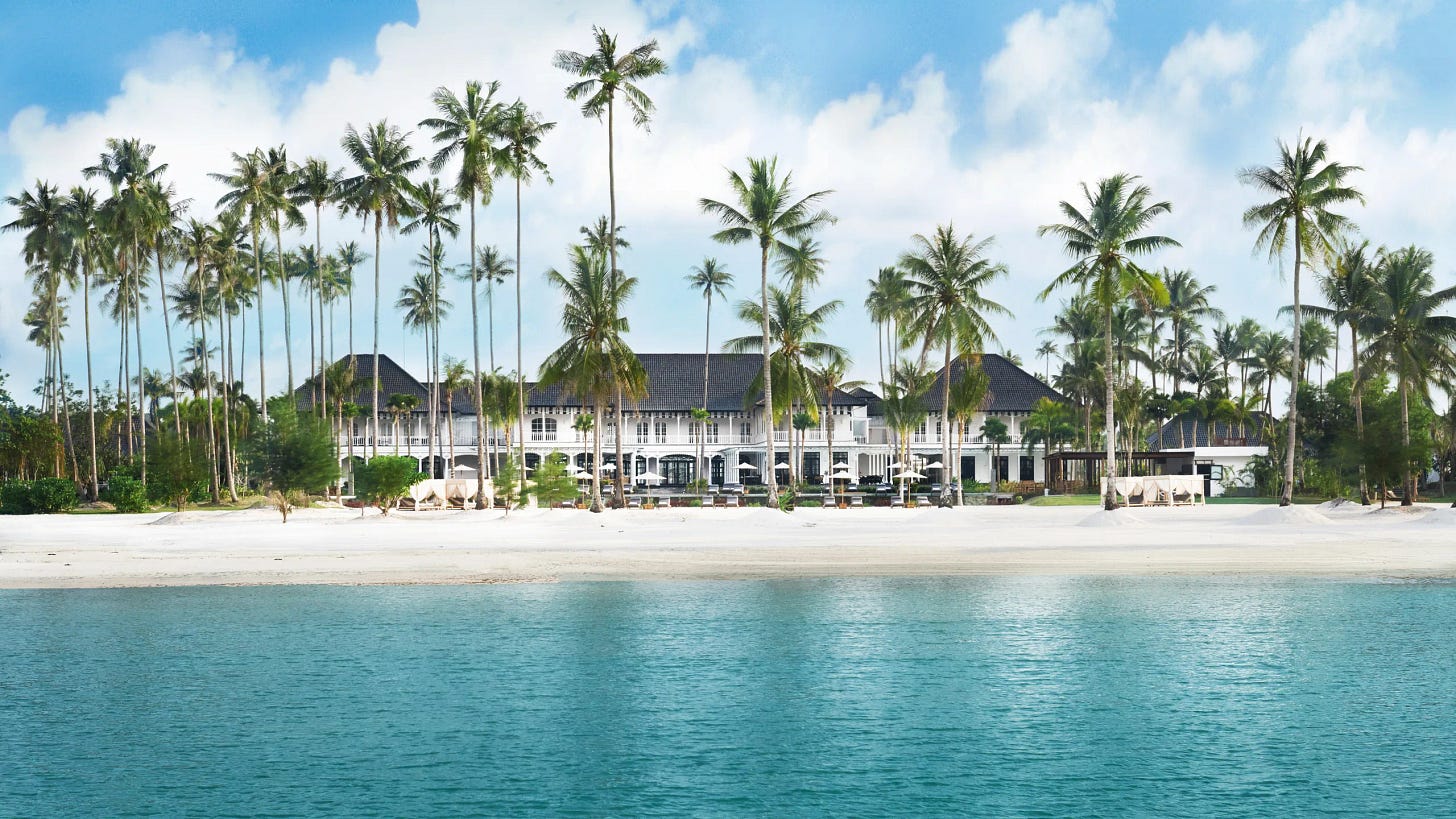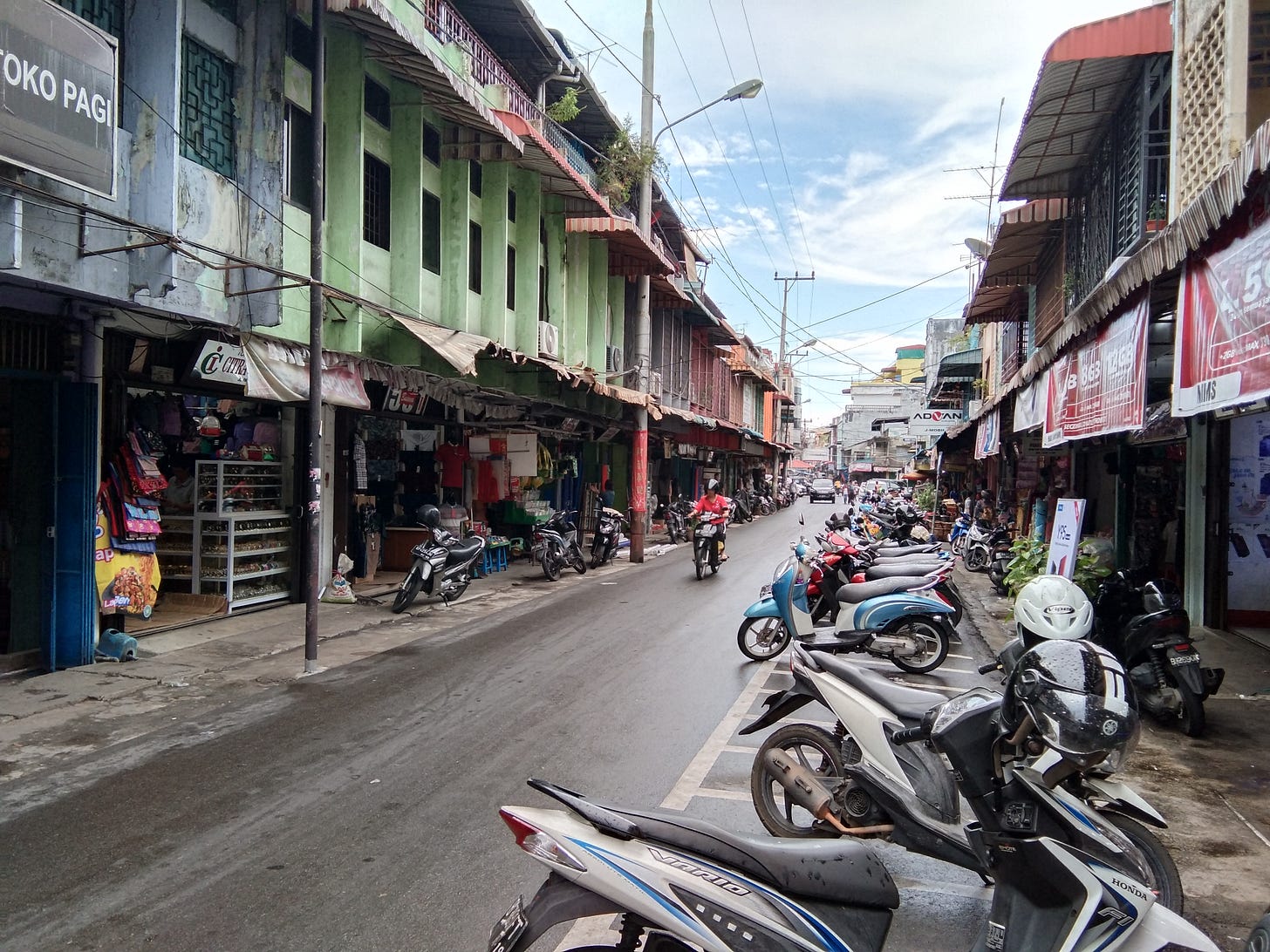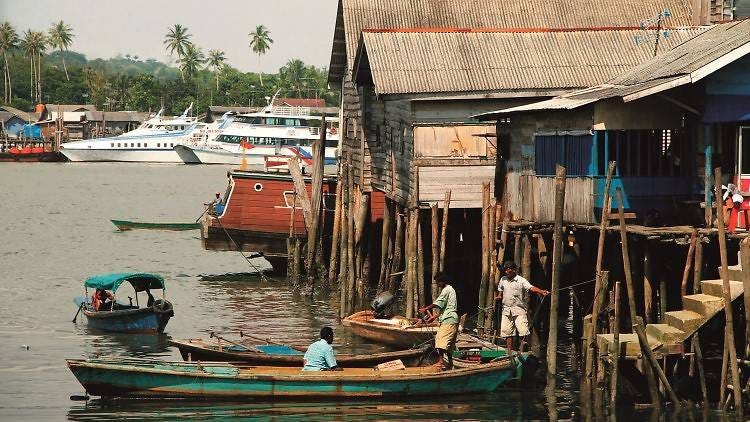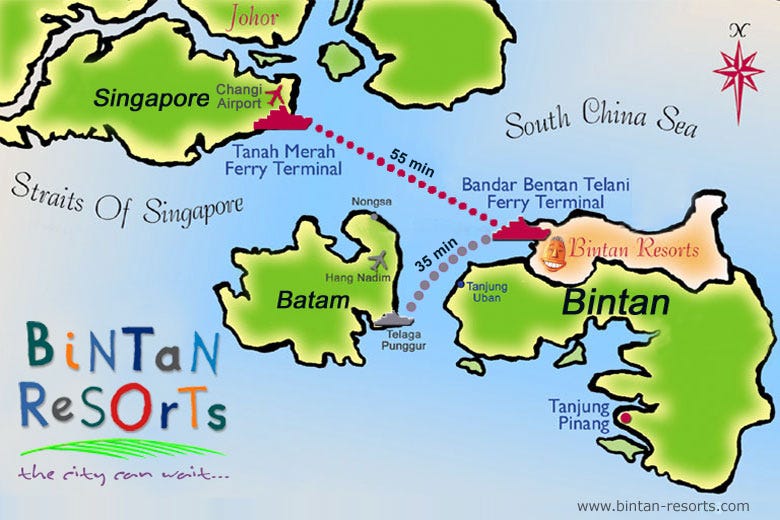“There is a local saying that you’re either brought to Bintan by a woman or a ship – in my case it was a ship,” says Swiss born Marc Thalmann. The former oil engineer moved from Geneva to this small island – roughly five times the size of the Isle of Man – not following a beautiful Indonesian woman but simply arriving by ferry from Singapore in 1988, where he opened Mutiara Beach Resort soon after.
“Bintan is interesting. For a few centuries it was the power core of the Malay Archipelago, including Singapore, but then it vanished from history’s radar to become a sleepy backwater infested by pirates and smugglers,” says Thalmann. In the 12th century the island of Bintan in the Strait of Malacca was called “Pirate Island” as a strategic location for Malay pirates looting ships sailing in the area.
I met Thalmann on his private beach, next to 20 acres of coconut plantation and a mangrove river. The sand is sidling through my toes and the vastness of the landscape around us astounds me – what seems like endless miles of white sand and water clear enough to present the bottom for examination. “The principal asset here is the natural beauty and then of course the convenient access,” Thalmann explains.
The location of Bintan, just 50 miles south of Singapore’s gleaming skyscrapers and man-made beaches, is a major factor in the island’s revitalisation. The island, part of the Riau Archipelago that makes up seven islands in total, is now being promoted by Indonesia tourism as the next best tourist spot after Bali. With the easy access to both Malaysia and Indonesia by plane or boat, it now means that Bintan is finding new blood.
Surrounded by tourmaline waters and a liberal sprinkling of smaller isles, Bintan is the quintessential palm-tree stacked beach haven, which in recent years has been a bit of a secret hideaway for Singaporeans and ex-patriates; and now finding they eye of other internationalists.
Inside this tropical fantasy is a hinterland of tropical forest and I venture inland to meet Stuart Perkins, who owns an ultra light flying company called Air Adventures Asia. His office, just a few minutes drive from the entry to the biggest real estate development on the island, Bintan Resorts, is where we embark his ultralight seaplane for an aerial tour of the island. “From above you’ll see the incredible landscapes: coral wrapped reefs, the white sandy beaches and traditional fishing villages.''
The ultra light ascends quickly and the island recedes to a green haven below us. Perkins, who has been on the island for a few years, has plans to open a restaurant close to the Sanchaya Resort on the northeastern coastline, where a lot of new high-end developments are taking shape, among them more commercial options like Sheraton and Swissbell but also the highly-anticipated, Mövenpick Bintan Lagoon Resort.
From the air, the fabulous Sanchaya villas look every bit the idyllic getaway, with their grand manor house and private villas strewn along the untouched beach and blissful loungers arranged with tiny waves lapping at one’s feet. As one of the headline developments, the Sanchaya brought old school hotel glamor back to the business, and to the island: it was the first luxury development on the island in decades. With British Butler Institute trained staff, the finest gourmet international cuisine, an exclusive spa (featuring herbs grown in their gardens for treatment use) and a personal attention to detail that is subtly noticed individually Sanchaya is better than home away from home.
Back on terra firma, I walk along on the Sanchaya’s manicured beach with the ocean licking my feet. Even though there are three resorts in the vicinity, none blot my view. The Sanchaya, as part of Bintan Resorts, is committed to ensuring that for most of your time on the island you’ll feel you’re the only one.
While luxury resorts might proliferate, Bintan is still home to a population of around 335,000, including the Orang Laut, a small local fishing community that lives in coastal houses built on stilts scattered all around the archipelago. One such home, called a sapao, is just a few minutes drive south of the Bintan Resorts area. The walls of the humble shelter are made from local tree bark and there is a thatch roof constituting nipah leaves. I admire this simple life as I walk around their settlement. Close by, I spot monitor lizards and colorful mangrove snakes and I watch as the fisherman mend their nets meticulously.
I find my days filled with everything tropical islands should supply: a private spot to kite surf, the buzzing little port of Tanjung Pinang and the tiny fishing village of Kawal where I eat grilled fish paste in a palm leaf.
Bintan, a yet-to-be-discovered island, has the best of everything a traveler could possibly desire. From the luxury offerings, including fine dining and retail indulgence, on the northern side of the island to the laid back vibe of the eastern shores where you can just hang in a hammock right down to the south where only the locals tread.
Of course I am conflicted as I share all this, hoping that it doesn’t get awash with too many tourists. But just enough to keep the economy buzzing.




